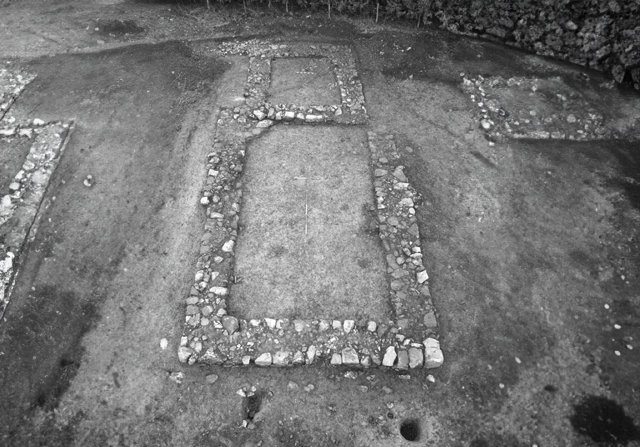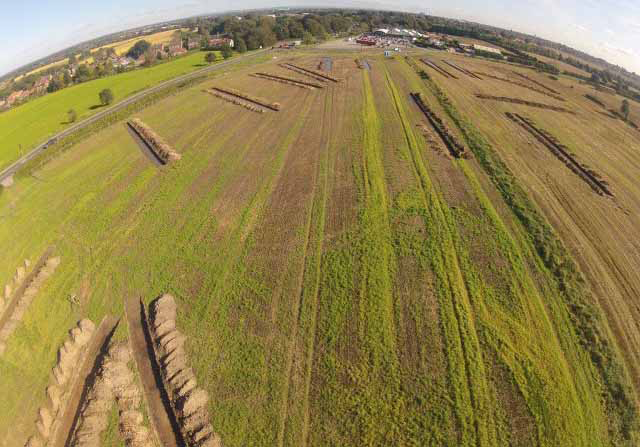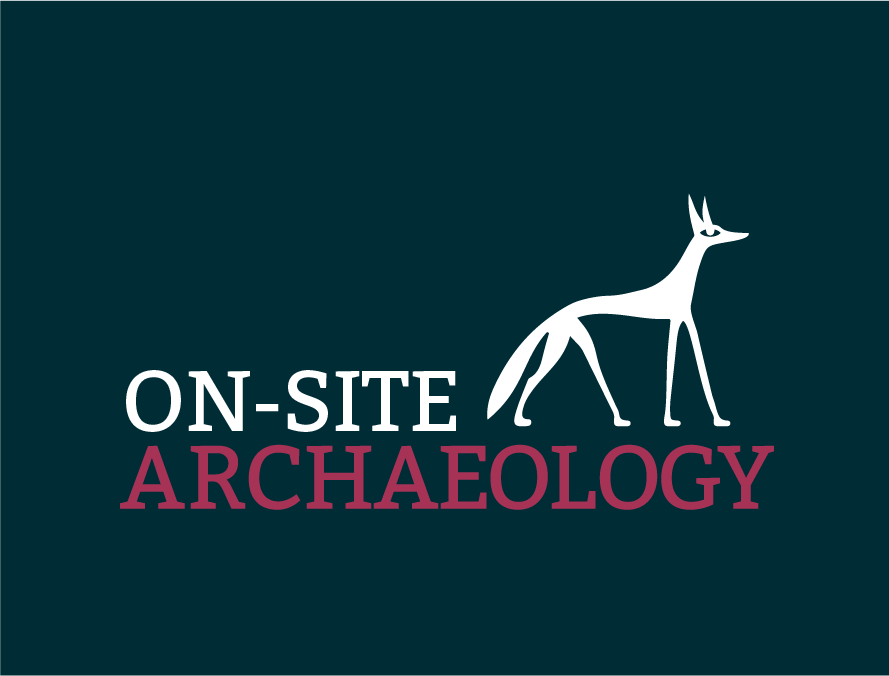CASE STUDIES
Leyburn’s lost Medieval chapel


A 4000 year old? corner of Wakefield

From April 2015 to April 2017, On-Site Archaeology undertook archaeological excavations on a site at City Fields, Wakefield prior to a road and housing development. Archaeology from various periods from the early Bronze Age through to the 20th century were found.

From April 2015 to April 2017, On-Site Archaeology undertook archaeological excavations on a site at City Fields, Wakefield prior to a road and housing development. Archaeology from various periods from the early Bronze Age through to the 20th century were found.
Poppleton Bar, York – a commercial and community excavation

Throughout October and November 2012, an archaeological evaluation was undertaken by On-Site Archaeology and local volunteers at North Field Lane, Upper Poppleton in advance of the construction of a new Park and Ride site.

Throughout October and November 2012, an archaeological evaluation was undertaken by On-Site Archaeology and local volunteers at North Field Lane, Upper Poppleton in advance of the construction of a new Park and Ride site.
Poppleton Bar, York – a commercial and community excavation
On-site Archaeology Ltd was approached to tender for an archaeological evaluation with community involvement by the City of York Council in advance of the construction of a Park and Ride, situated on the edge of the city.
An archaeological evaluation was undertaken by On-Site Archaeology Ltd at North Field Lane, Upper Poppleton during October and November 2012 in advance of the construction of a Park and Ride site. The prerequisite for community involvement provided a unique opportunity for community volunteers to work alongside professional archaeologists during every phase of the archaeological project including geophysics, fieldwalking, excavation, analysis and publication.
The evaluation process consisted of a geophysical survey, which indicated the presence of several types of geophysical anomalies, including potential archaeological features. The survey was followed by the excavation of 20 evaluation trenches. A number of archaeological features identified during the evaluation warranted further investigation, as a result a scheme of mitigation was proposed.
The investigation revealed a prolonged period of activity at Poppleton; flints recovered, although unlikely to be in situ, hinted at a human presence in the area dating back to the Mesolithic, a possible Bronze Age barrow was identified in the southwest corner of the development site during the magnetometer survey, but did not manifest during excavation. However, fragments of a collared urn with corded decoration recovered from the topsoil may suggest that the funerary monument did exist, but had been heavily truncated. A boundary ditch thought to be from the late Iron Age or Roman Period, as well as a Roman period boundary ditch and a medieval ridge and furrow field system with associated boundary ditches were also identified.
An important aspect of the project was the involvement of over 100 community participants from the local area. This led to a boost in public awareness, fostering positive attitudes towards the developers who were seen to be fulfilling their required duties, and creating a more inclusive historical narrative. The involvement of local people was extremely valuable, allowing the excavation of a greater percentage of the features than would have been possible in an ordinary commercial excavation. The new perspectives and enthusiasm also added greatly to the value of the project.
Leyburn’s lost Medieval chapel
An archaeological condition attached to planning approval for the construction of a two storey Extra Care development and seven Elderly Persons Bungalows with associated parking and landscaping required the production of a written scheme of investigation for a strip map and record and an earthwork survey. On-Site Archaeology were approached by Broadacres Housing Association to provide archaeological services in order to allow the development to take place.
The archaeological investigations at Harmby Road, Leyburn by On-Site Archaeology Ltd took place during October 2014 – January 2015. Following mechanical stripping a series of ditches and discrete features became apparent within the southern half of the investigation area along with the discovery of an unknown two-celled stone structure on a level area beyond a natural limestone ridge. Upon excavation several of the discrete features were revealed to contain human remains, requiring the application for a burial licence, which, once issued, enabled the excavation and lifting of the burials.
The structure has been interpreted as the foundation of a probable late Anglo-Saxon – early Norman church, whilst the majority of the other features were assigned a prehistoric date. The prehistoric activity comprised a small number of roundhouses, four-post structures, enclosure ditches and pits and post holes. A later post-Roman and early Anglo-Saxon phase was represented by interment of two inhumations. This phase was followed by a two-celled rectangular stone built structure, an Anglo-Saxon church comprising a nave which was extended by the addition of a Norman chancel. The church was enclosed by an apparently defensive palisade ditch. An infant burial found within the church structure is likely to have been interred after the church went out of use by mid-thirteenth – fourteenth centuries.
Towards the end of the excavation a number of site visits were organised for the local community including a site tour for local primary school children, this led to a boost in public awareness, fostering positive attitudes towards the developers who were seen to be fulfilling their required duties, and creating a more inclusive historical narrative. The construction of the care home was able to continue whilst the archaeological team carried out an effective excavation despite hard winter conditions. Post excavation analysis revealed that the site was of regional significance and the results warranted publication in a journal. (McCluskey, B., Cumberpatch, C., Keefe, K., Langley, K., & Rogers, N. 2025. Prehistoric Settlement, Two Post-Roman Inhumations and a Previously Unknown Medieval Church; Leyburn, North Yorkshire; Archaeological Investigation 2014–2015. Yorkshire Archaeological Journal, 1–26.)
A 4000 year old? corner of Wakefield
On-site Archaeology Ltd were approached by Miller Homes to satisfy the archaeological condition attached to planning approval for the construction of 500 homes and relief road at City Fields Wakefield.
On-Site archaeology Ltd liaised with the local authority archaeological advisor to agree a programme of archaeological works. The client’s flexible project timetable allowed a staged approach to the archaeological investigations. Results obtained from the road corridor were then used to inform later stages of required mitigation, with the aim of ensuring that the degree of archaeological intervention was proportionate to the nature of the findings.
Archaeology from various periods from the early Bronze Age through to the 20th century were found. Features excavated included an Early Bronze Age round barrow, two Middle Bronze Age cremation burials, an Iron Age roundhouse and two Iron Age cremations, Romano-British enclosures, medieval agricultural features, post-medieval garden features and possibly some evidence of WWI features related to nearby practice trenches. A small assemblage of late Saxon pottery was also recovered from this site.
Excavations identified a significant multi-phased site revealing a diverse range of activity. Very little prehistoric archaeology has previously been found in and around Wakefield therefore a securely dated Early Bronze Age funerary monument, two Middle Bronze Age cremations and a late Iron Age roundhouse with associated cremations are of great importance. The late Saxon pottery assemblage is also likely to be regionally significant.
A cooperative working relationship with the developers enabled the archaeological strategy to fulfil the archaeological planning condition in an expedient and economic fashion, minimising delay and expense to the developer. Further analysis of this site is currently underway and an article for the Yorkshire Archaeological Journal is in preparation.
